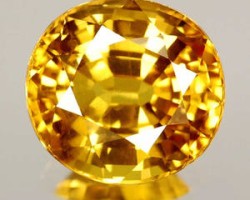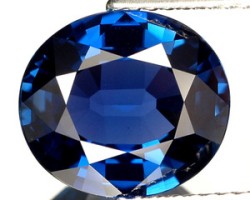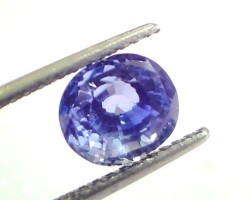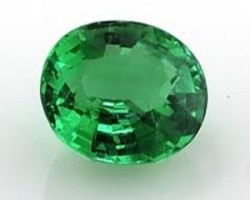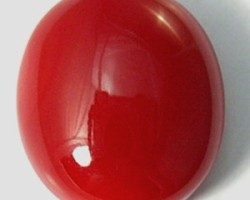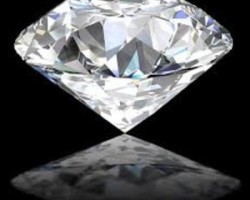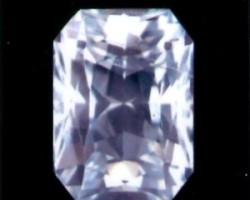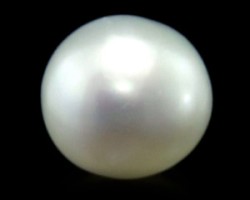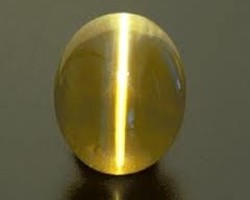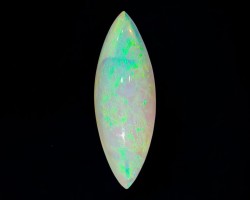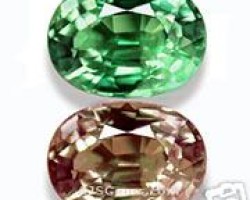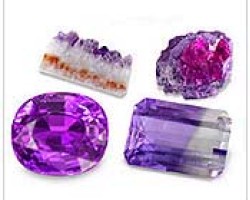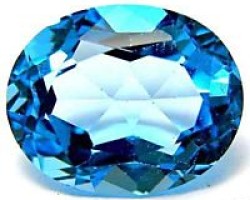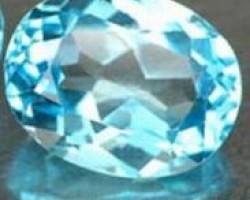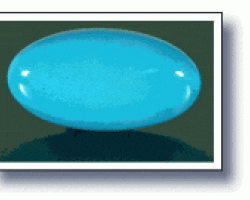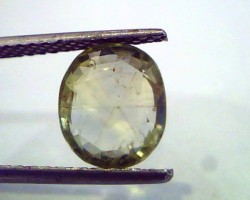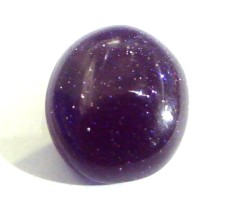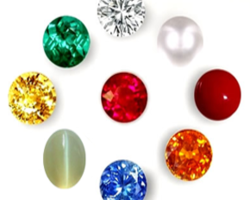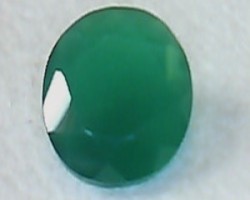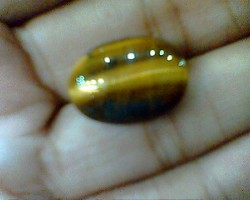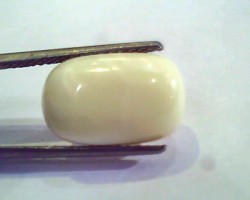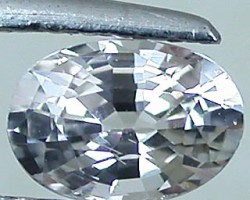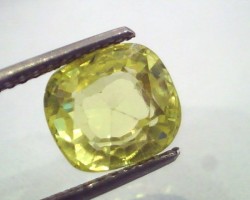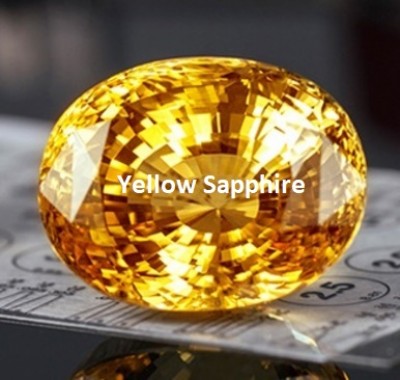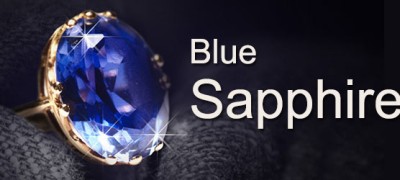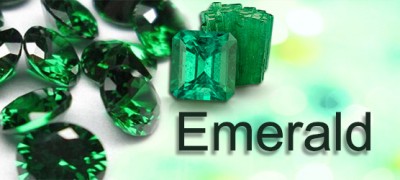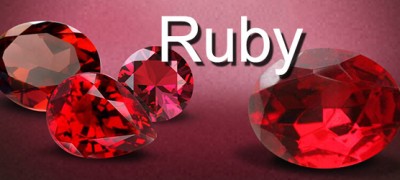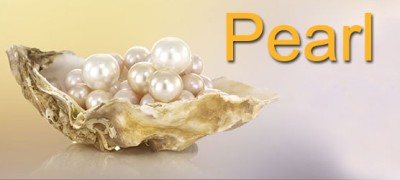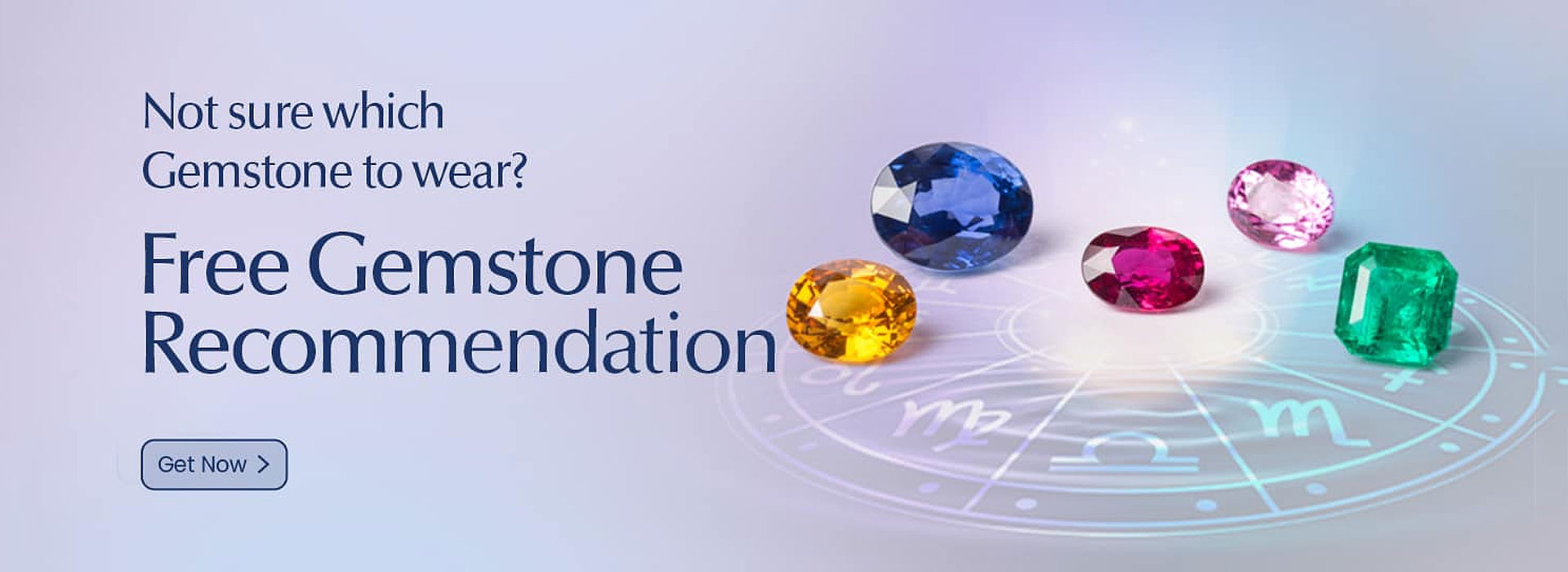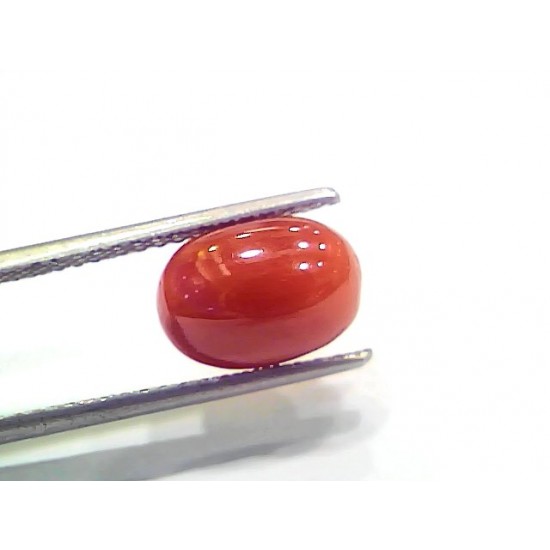
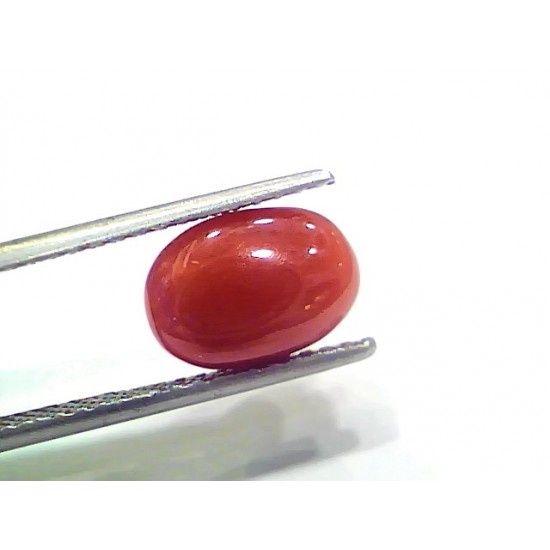
Out Of Stock


Description | |
Gemstone Name : | Natural red coral |
Number of Pieces: | 1 Pc |
Weight: | 3.90 carat |
Gem Shape: | oval cab |
Color: | orange red |
Clarity: | opaque |
Luster: | EXCELLENT |
ORIGIN | Italy |
Measurement | 11.25 mm approx |
3.90 Ct 6.41 Ratti Natural Italian Red Coral Moonga Gemstone
- Stock: Out Of Stock
- Model: coral616
- Weight: 3.90Ct
₹7,700.00
Available Options
Red coral, also known as "moonga" in Hindi, is a precious gemstone that is primarily found in the Mediterranean Sea. It has been used for centuries for its healing properties and is believed to have numerous benefits. Some of the benefits of red coral are:1)Improves Health: Red coral is believed to improve overall health and vitality. It is known to boost the immune system and help in the absorption of nutrients.2)Enhances Emotional Balance: Red coral is thought to help in enhancing emotional balance and reducing anxiety and depression. It is believed to promote calmness and help in overcoming feelings of negativity.3)Boosts Confidence: Red coral is said to help in boosting self-confidence and promoting courage. It is believed to help in overcoming fears and promoting a positive outlook on life.4)Enhances Creativity: Red coral is thought to help in enhancing creativity and promoting artistic expression. It is believed to help in overcoming creative blocks and promoting inspiration.5)Improves Relationships: Red coral is said to help in improving relationships and promoting harmony in personal and professional life. It is believed to help in overcoming communication barriers and promoting understanding.6)Promotes Spiritual Growth: Red coral is thought to help in promoting spiritual growth and connecting with the higher self. It is believed to help in developing intuition and promoting inner peace.It is important to note that the benefits of red coral are largely based on belief and traditional practices.
Here are some frequently asked questions about red coral:1)What is red coral?Red coral is a natural gemstone that is formed from the skeletons of marine organisms called coral polyps. It is primarily composed of calcium carbonate and is found in shades of pink, orange, and red.2)Where is red coral found?Red coral is primarily found in the Mediterranean Sea, particularly off the coasts of Italy, Spain, and France. It is also found in other parts of the world, including Japan, Taiwan, and Hawaii.3)What are the benefits of wearing red coral?Red coral is believed to have various benefits, including promoting good health, vitality, and emotional balance. It is also thought to enhance creativity, intuition, and spiritual awareness.4)How should I care for my red coral jewelry?Red coral is a relatively soft gemstone that can scratch and chip easily. To care for your red coral jewelry, avoid exposing it to harsh chemicals, extreme temperatures, or direct sunlight. Clean it gently with a soft cloth and store it separately from other jewelry to prevent scratches and damage.5)Is red coral rare and expensive?Red coral is considered a precious and rare gemstone, particularly high-quality Mediterranean coral. The price of red coral can vary based on its color, clarity, size, shape, and origin. In general, Italian and Japanese red coral are considered of higher quality and more expensive than other varieties.6)Can wearing red coral have any negative effects?Some people believe that wearing red coral can have negative effects, particularly if it is not suited to their astrological or energy profile. Additionally, red coral should not be worn by people with allergies to shellfish, as it can cause allergic reactions.7)Can red coral be used for healing?Red coral is sometimes used in alternative healing practices, such as Ayurveda and traditional Chinese medicine, for its purported healing properties. However, there is limited scientific evidence to support these claims, and red coral should not be used as a substitute for medical treatment.
If you have decided to wear red coral as per the recommendations of a qualified astrologer or gemstone expert, here are some general guidelines on how to wear red coral:1)Choose a genuine and good-quality red coral: It is important to ensure that the red coral you are wearing is authentic and of good quality. Red coral is a precious gemstone, and there are many imitations and synthetic versions available in the market. Purchase red coral from a reputable and trusted source.2)Choose an appropriate setting: Red coral is often set in silver, gold, or copper. You can choose a setting that you are comfortable with and that matches your personal style. It is recommended to avoid settings that cover the entire gemstone, as it may hinder the gemstone's interaction with the skin and its purported benefits.3)Choose the right finger: Red coral is usually worn on the ring finger of the right hand for men and women, as it is believed to be associated with the planet Mars. However, you can also wear it on other fingers as per astrological or personal preferences.4)Cleanse and energize the gemstone: Before wearing red coral, it is recommended to cleanse and energize the gemstone to remove any negative energies or impurities it may have absorbed. You can do this by soaking the gemstone in clean water or milk, or by using specific gemstone cleansing methods recommended by an expert.5)Wear it on an auspicious day and time: It is believed that wearing red coral on a day and time that is considered auspicious according to Vedic astrology can enhance its positive effects. Consult with an expert for the best day and time to wear red coral based on your birth chart or horoscope.6)Wear it regularly: To derive the maximum benefits of red coral, it is recommended to wear it regularly and consistently. You can wear it during the daytime or as per the recommendations of an astrologer.7)Take care of the gemstone: Red coral is a precious gemstone, and it requires proper care to maintain its appearance and efficacy. Avoid exposing it to harsh chemicals, extreme temperatures, or physical impact. Clean it regularly using a soft cloth and store it in a safe place when not in use.8)Seek professional guidance: It is always advisable to seek professional guidance from a qualified astrologer or gemstone expert when wearing red coral or any other gemstone. They can provide personalized recommendations based on your individual birth chart, horoscope, and specific requirements.Remember that while gemstones like red coral are believed to have certain properties or benefits according to astrology or other belief systems, there is no scientific evidence to support these claims. Gemstones should not be relied upon as a substitute for professional medical, financial, or legal advice. Always prioritize your health, safety, and well-being, and make informed decisions based on reliable sources and expert guidance. So, if you are planning to wear red coral or any other gemstone, it is best to seek guidance from a qualified expert and follow their
Moonga is the Hindi name for red coral, which is a precious gemstone formed from the skeletons of marine animals called coral polyps. Here are some other names for red coral in different languages and cultures:Praval: In Sanskrit, red coral is called "praval", which means "coral".Corallium rubrum: This is the scientific name for red coral.Precious coral: This is a general term used to describe all types of coral that are used in jewelry. Red coral is the most highly valued type of coral.Angel skin coral: This is a term used to describe a pale pink variety of coral. The name comes from the delicate color and texture, which is said to resemble the skin of an angel.Blood coral: This is a term used to describe red coral that has a deep red color, resembling blood.Japanese coral: This is a term used to describe red coral that is found in the seas around Japan. Japanese coral is highly valued for its deep red color and high quality.Mediterranean coral: This is a term used to describe red coral that is found in the Mediterranean Sea. Mediterranean coral is highly valued for its rich color and durability.
The price of red coral can vary depending on a variety of factors, including its quality, origin, size, shape, color, and demand. Here are some general price ranges for red coral:Low-quality Pacific red coral: $10 to $30 per caratMedium-quality Pacific red coral: $30 to $100 per caratHigh-quality Pacific red coral: $100 to $300 per caratLow-quality Mediterranean red coral: $50 to $100 per caratMedium-quality Mediterranean red coral: $100 to $500 per caratHigh-quality Mediterranean red coral: $500 to $1,500 per caratIt's important to note that these are just general price ranges, and the actual price of red coral can vary based on many factors, including the specific characteristics of the individual piece of coral, the market conditions, and the location of the seller. Additionally, prices for red coral jewelry and decorative objects may differ significantly from prices for loose coral, due to the added value of the design and craftsmanship.
The quality of red coral can vary based on several factors, including its color, clarity, shape, and origin. Here are some general guidelines for assessing the quality of red coral:1)Color: The color of red coral can range from pale pink to deep red, with shades of orange and salmon in between. The most prized color is a bright, uniform, and vivid red hue. Coral with a dull or uneven color is considered of lower quality.2)Clarity: Red coral can have natural inclusions, such as white or black spots, lines, or pits, which are part of its unique texture and character. However, too many or too large inclusions can affect its durability and appearance. Clear and smooth red coral is considered of higher quality.3)Shape: Red coral can be found in various shapes and sizes, from irregular to oval, round, or cylindrical. The shape and symmetry of the coral can affect its overall appearance and value. Well-shaped and balanced red coral is considered of higher quality.4)Origin: Red coral is primarily sourced from the Mediterranean Sea, particularly from Italy, Japan, and Spain. The origin of the coral can affect its price, as Italian and Japanese coral are considered of higher quality and more expensive than Spanish coral.5)Texture: The texture of red coral should be smooth, even, and polished, with no cracks, fissures, or rough spots. A rough or pitted texture can indicate low quality or damage to the coral.When purchasing red coral, it is essential to buy from a reputable and trustworthy source that can provide information about the quality, origin, and authenticity of the gemstone. An experienced gemstone expert or jeweler can also help you assess the quality of red coral and make an informed decision based on your individual preferences and requirements.
Red coral is a natural gemstone that is primarily composed of calcium carbonate (CaCO3), the same mineral that forms the shells of marine organisms such as oysters and clams. Red coral also contains small amounts of other elements and compounds, such as magnesium, iron, organic matter, and trace elements.The chemical composition of red coral can vary based on its origin, age, and environmental factors. For example, Mediterranean red coral typically has a higher magnesium content than Pacific red coral, which can affect its color and density.Here are some general chemical specifications of red coral:Chemical formula: CaCO3Density: 2.60 to 2.70 g/cm3Hardness: 3.5 on the Mohs scaleRefractive index: 1.486 to 1.658Birefringence: 0.160 to 0.172Specific gravity: 2.60 to 2.70Pleochroism: Weak to moderate, red to pinkFluorescence: Weak to moderate, pink to redChemical resistance: Slightly soluble in water, soluble in acids and basesIt is important to note that while the chemical composition of red coral can provide useful information about its properties and characteristics, it is not the only factor that determines its quality or value. Other factors such as color, clarity, shape, and origin also play a significant role in assessing the quality and desirability of red coral as a gemstone.

